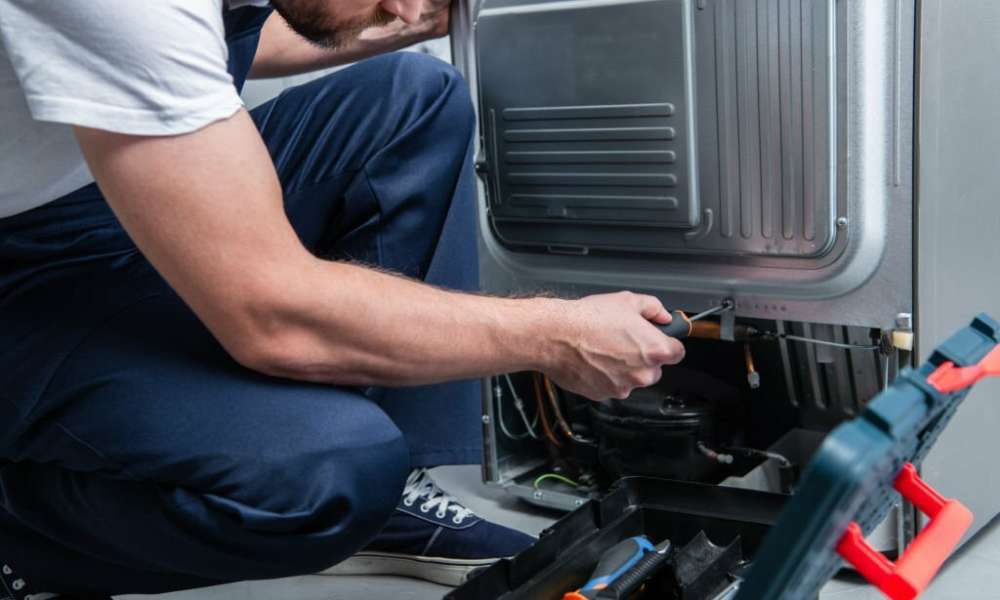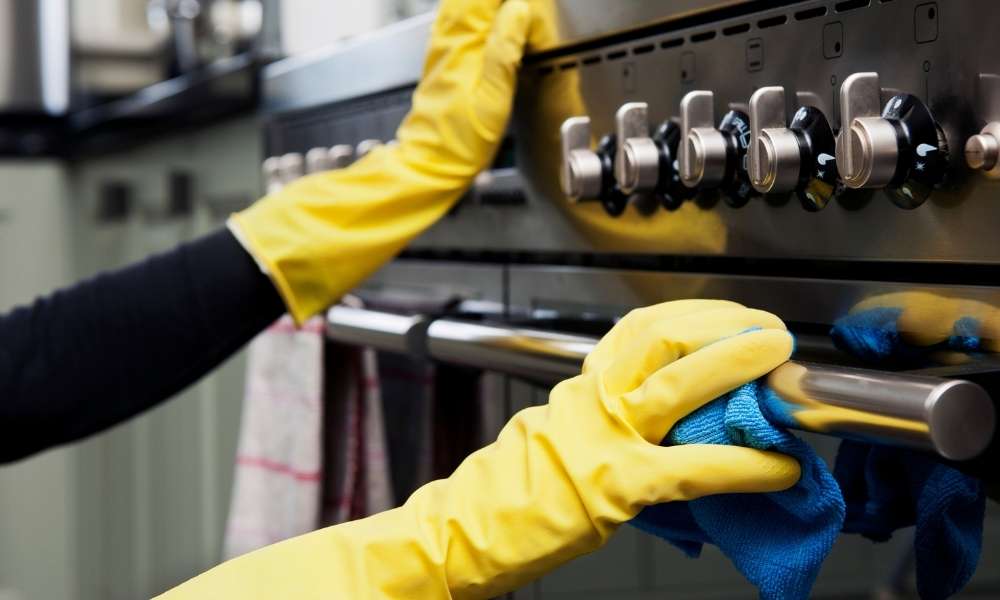To remove Freon from a refrigerator, you need To hire A professional technician who Is certified To handle refrigerants safely. Removing refrigerators can Be dangerous and requires proper equipment And knowledge Of regulations.
It is important To ensure that the Freon is properly disposed of To prevent harm To the environment. When it comes To removing refrigerators, It is crucial To hire A certified technician With the proper equipment For safe handling And disposal Of refrigerants.
Do not attempt To remove Freon without the necessary expertise, As it can Be hazardous. Follow proper procedures To ensure the responsible disposal Of Freon and prevent environmental harm. Hiring a professional technician guarantees A safe and compliant process For removing Freon from your refrigerator.
Step 1: Gather Necessary Equipment
Safety goggles: Protect your eyes from Any potential spray Or splashes during the Freon removal process.
Gloves: Wear gloves To shield your hands From refrigerant And any other chemicals.
Refrigerant recovery machine: This machine helps in extracting the Freon from the refrigerator.
Recovery tank: The recovered Freon Is stored in this tank.
Charging hoses: You’ll need these hoses To connect the recovery machine To the appliance.
Wrench: Use a wrench To disconnect the piping connections.
Screwdriver: A screwdriver will be necessary To remove any panels Or screws that Are obstructing access To the piping Or refrigerant lines.
Step 2: Prepare The Refrigerator
Unplug the refrigerator: Before starting the process Of removing Freon from your refrigerator, Make sure To unplug the appliance from the power source.
Remove all food and shelves: Empty the refrigerator, Remove all food items And shelves from the interior. This will give you better access To the refrigeration system.
Locate the access valve on the refrigeration system: Look for the access valve, which is usually located At the back of the refrigerator. It is A small, cylindrical Or hexagonal valve that allows you To connect the necessary tools For removing the Freon.
Step 3: Connect The Recovery Equipment
You need To connect the recovery equipment. Firstly, Attach the charging hoses To the access valve On the refrigerator. Make sure they Are properly secured To avoid any leaks. Secondly, Connect the recovery machine To the charging hoses. This will allow the Freon To be safely extracted from the refrigerator. Lastly, Secure the recovery tank To the recovery machine. The tank will collect the extracted Freon For proper disposal. It is important To follow these steps carefully To ensure the safe removal Of the Freon from your refrigerator.
Step 4: Begin The Refrigerant Recovery Process
Turn on the recovery machine: To start the refrigerant recovery process, You need To turn on the recovery machine. This machine Is specifically designed To remove freon from refrigerators And other cooling appliances.
Open the valve on the recovery tank: Once you turn On the recovery machine, You should open the valve On the recovery tank This will allow the freon To flow from the refrigerator To the recovery tank.
Allow the machine to fully recover the freon from the refrigerator: After opening the valve, You need To wait for the recovery machine To fully recover the refrigerator. This may take some time depending On the size and capacity Of the appliance.
Note: It is important To follow safety guidelines And dispose Of the recovered freon properly To prevent any harm To the environment.
Step 5: Safely Dispose Of The Freon
Once you have completed the recovery process, It is important To take proper precautions To dispose Of the freon responsibly.
To begin, Close the valve on the recovery tank To prevent any accidental release Of the freon. Make sure that the valve Is securely closed To minimize any potential safety risks.
Next, Disconnect the recovery machine And charging hoses. Ensure to properly detach all connections To avoid any leakage Or contamination.
Proper labeling and sealing Of the recovery tank Is crucial. Mark the tank As containing freon and seal it tightly To prevent any escape during transportation Or storage.
Lastly, It is important To follow local regulations And guidelines For the disposal Of freon. Contact your local waste management authority Or environmental agency To understand the proper procedures And requirements For disposing Of freon safely.
Step 6: Reassemble The Refrigerator
The next step is To reassemble it. Begin by replacing the shelves And arranging your food items back inside. Make sure To organize everything in A way that maximizes space And ensures an efficient cooling process. After reassembling the interior, Plug in the refrigerator And turn it on. Keep an eye out For any leaks Or issues that may arise during the process. It’s important To address these problems promptly To prevent any further damage To your appliance.
What Kind Of Plug Does A Refrigerator Use?
Step 7: Properly Dispose Of The Equipment
It is crucial To properly dispose Of the equipment used For the recovery process. Extract the Freon, then clean And store the recovery equipment following the manufacturer’s instructions To ensure it remains in good condition For future tasks. Carry out regular maintenance As the manufacturer recommends To prolong the equipment’s life. Safely dispose Of any disposable items used during the recovery process, Like filters or cartridges, according To local regulations. By properly cleaning And storing the recovery equipment And disposing Of any disposable items appropriately, You help maintain A safe And sustainable approach To handling refrigerant materials.
Tips For Safe Freon Removal
It is A task that should Be done safely And responsibly. To ensure A smooth process, Always wear safety goggles And gloves To protect yourself from potential harm. Additionally, It is important To follow the manufacturer’s instructions For the recovery machine. This will help you operate the machine correctly And minimize any risks. Another important factor To consider Is being aware Of the local regulations regarding freon disposal. Different regions may have specific guidelines And restrictions For disposing of freon, So it Is crucial To comply with these regulations To avoid penalties Or environmental damage.
Frequently Asked Questions
How Do You Evacuate Freon From A Refrigerator?
You should hire A professional technician who can safely remove the refrigerant. Attempting to Do it yourself can be dangerous And may violate environmental regulations. Contact a licensed expert For proper Freon evacuation.
How Do You Safely Remove Freon?
Follow these steps:
- Hire a licensed professional who Is trained in handling refrigerants.
- Ensure proper ventilation in the area.
- Use specialized equipment To recover the Freon, Following environmental regulations.
- Store the recovered Freon in approved containers.
- Dispose of the Freon properly according To local regulations.
Can You Scrap A Fridge With Freon?
Yes, You can scrap A fridge with Freon. However, It’s Important To follow proper disposal regulations due To the harmful effects Of Freon on the environment. Consult specialized professionals, Like refrigerant recovery services, For safe And compliant disposal.
How Do I Remove Freon From A Refrigerator?
You’ll need to hire A licensed professional. Removing Freon involves specific equipment And Expertise To ensure safe disposal And compliance with environmental regulations. Attempting to Do it yourself can Be Dangerous And may result in fines.
Contact a professional To handle refrigerant removal properly.
Conclusion
Removing freon from A refrigerator is A process that should Be handled with caution To ensure safety And environmental responsibility. By following the proper steps And regulations, You can effectively remove freon And reduce the impact On the ozone layer.
Remember to consult A professional if you are unsure Or uncomfortable with performing the task yourself. With the right knowledge And approach, You can maintain your refrigerator’s efficiency while practicing responsible freon removal.





